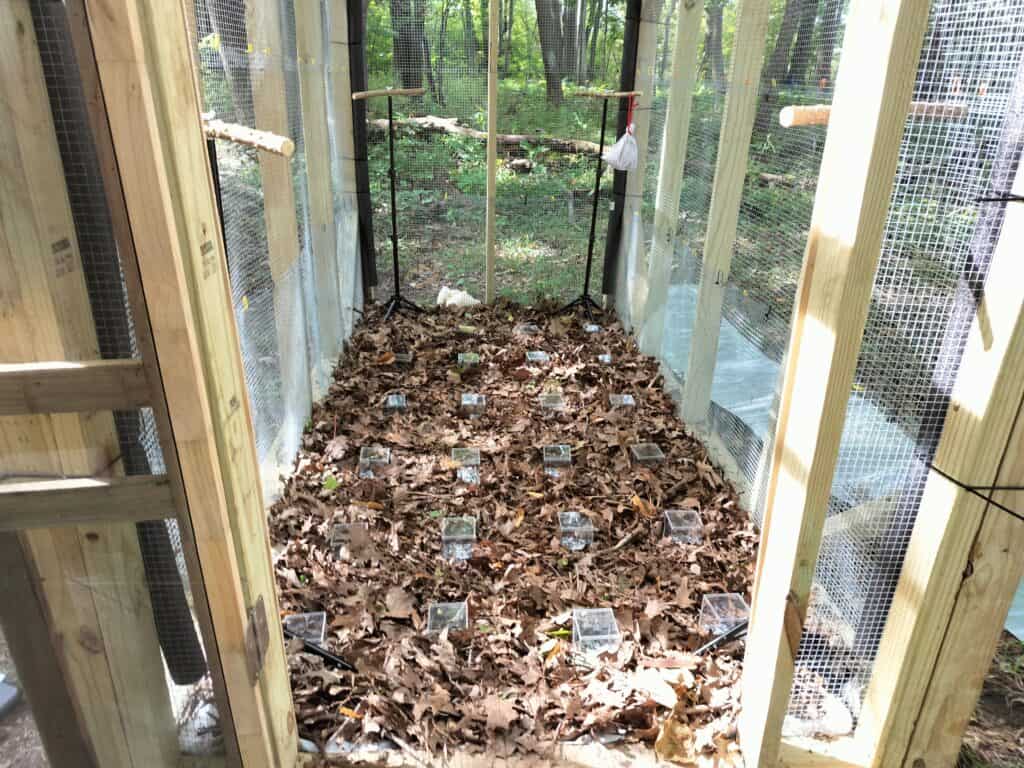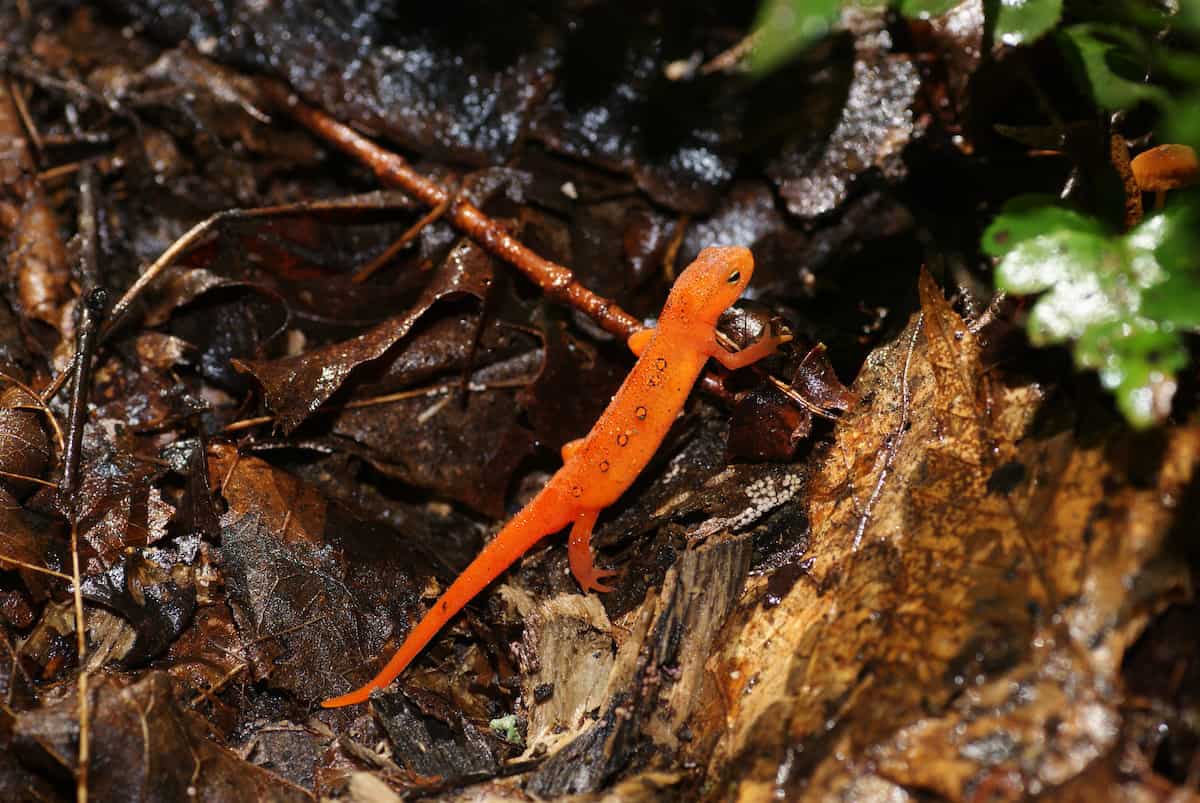Share this article
Wildlife Featured in this article
- Red-backed salamanders
- American robins
- Blue jays
- Common grackles
TWS 2023: Birds tap into abundantly available salamander food source
Researchers witnessed an American robin attempting to prey on a red-backed salamander
When Endi Piovesana set out to study avian predation on red-backed salamanders, the jury was still out on whether it even happened or not.
“The conclusions that I was reading up on were kind of inconsistent,” said Piovesana, an undergraduate student at Michigan State University. One article said birds weren’t major salamander predators. Another said the opposite. “It was pretty variable across the board.”
Piovesana, with help from his mentor Alexa Warwick, a professor at Michigan State University, hoped to set the record straight on this common salamander, which occupies woodlands throughout much of eastern North America. He presented his research on a poster at The Wildlife Society’s annual conference in Louisville this year.
Instead of deploying one method in his research, he and his colleagues had a three-pronged approach. In the fall and spring of 2021 and the fall of 2022, Piovesana set out camera traps with clay model salamanders at the Rose Lake State Wildlife Area near the University of Michigan campus. “The idea was to try and capture what would have been naturally occurring interactions,” he said.
He placed the cameras in shrubby areas that birds would be attracted to. The models also attracted birds.
When reviewing the footage, Piovesana captured live video of an American robin trying—unsuccessfully—to capture and eat a live red-backed salamander (Plethodon cinereus). “It was very cool, because you can actually see the salamander drop its tail, and it’s able to get away,” he said.

Piovesana noted predation occurred mostly from American robins (Turdus migratorius), blue jays (Cyanocitta cristata) and common grackles (Quiscalus quiscula). They all exhibited similar foraging behavior, including overturning leaf litter and woody debris. “It seems pretty conducive to finding salamanders,” he said.
Still, capturing these interactions was pretty rare. Piovesana was more likely to find footage of opossums or raccoons going after the clay models, which he originally baited with peanuts.
To add more depth to his study, Piovesana conducted a genetic analysis of bird fecal samples to look for evidence of salamanders. He didn’t find any, but he thinks that may be because he collected the samples in the fall, when birds are more likely to be eating fatty foods to fuel up for migration in the winter. “In the spring, they’re looking for more protein so they can feed their young,” he said. He hopes to conduct the genetic research again next spring.

The third part of his research involved setting up a more controlled experiment inside an aviary. After capturing birds at a banding station, he placed them inside the aviary with plastic containers that held either red-backed salamanders, mealworms or were empty, and he hid in a hunting blind to watch. He also set up video cameras to see which prey the birds were choosing, but he hasn’t yet reviewed the footage.
Initially, he has seen some interest by the birds in the salamanders, though. “I definitely noticed a few strikes from the American robins,” he said.
Piovesana said the findings are important, especially as North American birds continue to decline.
“Red-backed salamanders are just such an insanely abundant source of biomass in the forest where many of these birds that are in decline reside,” he said. “Understanding their needs is key to conserving them, and I think trying to identify potential relationships here would be pretty significant in advancing those conservation efforts.”
Header Image: Endi Piovesana stands outside an aviary where he conducted experiments to see if birds would prey on red-backed salamanders. Credit: Courtesy Endi Piovesana








